What Steel is Used to Make Shipping Containers?
Small shipping containers are made out of a variety of metals. Most of them being steel. Check out this guide to learn what materials are used.
Have you ever thought about using small shipping containers as part of your business?
Perhaps you ship products overseas, or you’ve been considering them for temporary office space or storage? Ranging from 6-10ft, small shipping containers are a low-cost alternative to more permanent structures.
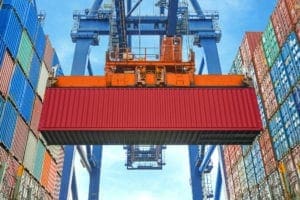
It might surprise you to find out that small shipping containers come with several options: airtight metal, insulated, refrigerated, and even military-grade. You can also add a chassis to create a shipping container trailer!
When it comes to metal, we’re usually conditioned to think of rust as a bad thing, but the steel used in shipping containers benefits from protection when a layer of rust forms! What kind of steel is this?
Introducing Weathering Steel
Shipping containers are constructed with a type of steel known as weathering or self-healing. Also called COR-TEN (or corten), these words are sometimes used interchangeably and are a U.S. Steel trademark. The name derives from the two main properties of the steel: corrosion-resistant and tensile-strength.
As the name suggests, it’s a very strong material that is weldable and rust-resistant. When weathering steel that is painted suffers a chip or has its paint worn off by the elements, the surface rust prevents further erosion.
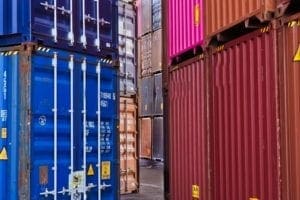
Corten is known as alloy steel because it contains other non-metallic elements, namely carbon, sulfur, and silicon. The metals in this type of steel are usually iron, copper, manganese, nickel, and chromium.
The motivation behind the development of corten was steel that would not need painting and would develop a rust-like exterior after years of weather exposure. With that said, corten also comes in a prepainted form, which has even more benefits, like 25-year anti-perforation.
Are Shipping Containers Bulletproof?
While a standard shipping container isn’t designed to be bulletproof, the National Geographic show ‘Doomsday Preppers’ tested it out. They found that it would indeed stop a .22 caliber long rifle round.
The Canadian YouTube channel ‘Civil Advantage’ tested out even more bullets and found out that a shipping container could also stop a 9mm hollowpoint and 12 gauge buckshot. Here are the bullets that it couldn’t stop:
- PolyCase
- 9mm FMJ
- 5.56 Frangible
- .223 JHP
- 12 gauge slug
How Thick Is the Metal on a Shipping Container?
The walls on small shipping containers are usually made with 14 gauge corrugated sheet steel panels. The thickness is 0.075 inches, and these panels are welded to the rest of the structure.
The frame, pillars, and rails are 7 gauge tubular steel, which is considerably thicker at 0.187 inches. The corner castings (or corner fittings) are reinforced openings for twist-lock connections. These enable the container to be connected to others or anchor points. They are manufactured to be strong enough for lifting by a crane rig, even when full of goods.
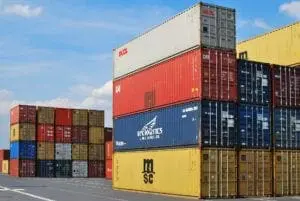
The cross members are the joists that support the floor on the bottom of the shipping container and are 3-4mm thick. The purpose of these beams is to lift the floor from beneath, so that moisture is unable to get into the container and it can be lifted without damage. The added benefit of this arrangement is that the shipping container can be used as an office, without the need for a foundation.
The floor itself is 28mm thick. Plywood is often screwed to the floor and is usually 1-1/8″ thick. Woven bamboo is becoming increasingly popular, due to it being less expensive.
How Long Can a Steel Shipping Container Last?
Because the weather conditions at sea are so harsh, most shipping companies will sell their shipping containers after 10-20 years. After that, they are often purchased for alternative use and can provide many more years of service. When used as a storage unit, a shipping container will be exposed to less extreme weather throughout its lifespan.
The common average for lease/rental containers might be 10-12 years, but a storage container can last 25-30 years, with some reporting as many as 50 years.
Several factors will affect the durability of small shipping containers. The most important factors are how well you treat it and if the exterior is well-painted or maintained, perhaps by using insulation measures like cladding.
Will a Shipping Container Protect Against EMP?
An electromagnetic pulse (EMP) is a short burst of energy and can be either natural or man-made. Depending on the source, it could be radiation, an electric/magnetic field, or a conducted electrical current.
Interference from an EMP can disrupt or damage electronic gear and powerful events like a lightning strike can damage buildings. How do small shipping containers hold up to an EMP?
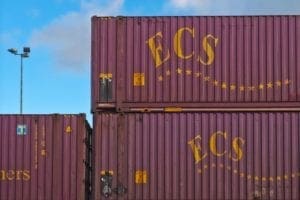
Because it’s exterior is entirely metal, a shipping container has excellent potential as a faraday cage. For the same reason, you’re relatively safe in your car during a lightning storm. The caveat is, that you mustn’t touch anything metal that will conduct the EMP to your body.
As long as the metal base of the shipping container is in contact with the earth, then the container is electrically grounded.
To be fully shielded from the effects of an EMP, you would need to make sure that you or your electronics don’t touch the metal walls. If you don’t have a wooden floor, you would need a thick carpet or rugs to shield you and your gadgets.
Need Small Shipping Containers?
We’ve shown that small shipping containers are versatile in use and durable in the elements. Don’t store valuable items in a more expensive, but less-secure wooden shed. Shipping containers have an excellent ability to stay dry, they are not a fire risk, and they’re better equipped to keep rodents and insects out.
If you require small shipping containers for commercial or residential use, we can help you out. We are a nationwide solution for renting and buying steel storage containers, Conex boxes, and metal shipping containers.
Get a quote and compare prices.
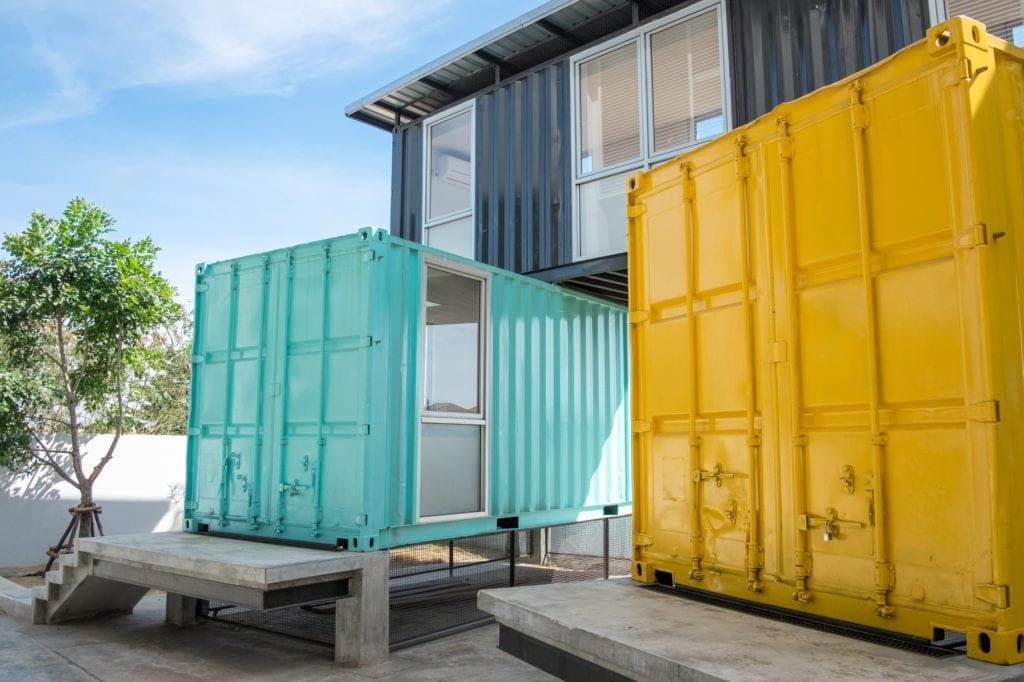

My brother and I want to get a shipping container and modify it into a shed. We need to attach it to other metal parts we have found. Thanks for making it clear that they are weldable and rust-resistant so we know how to go about modifying it.